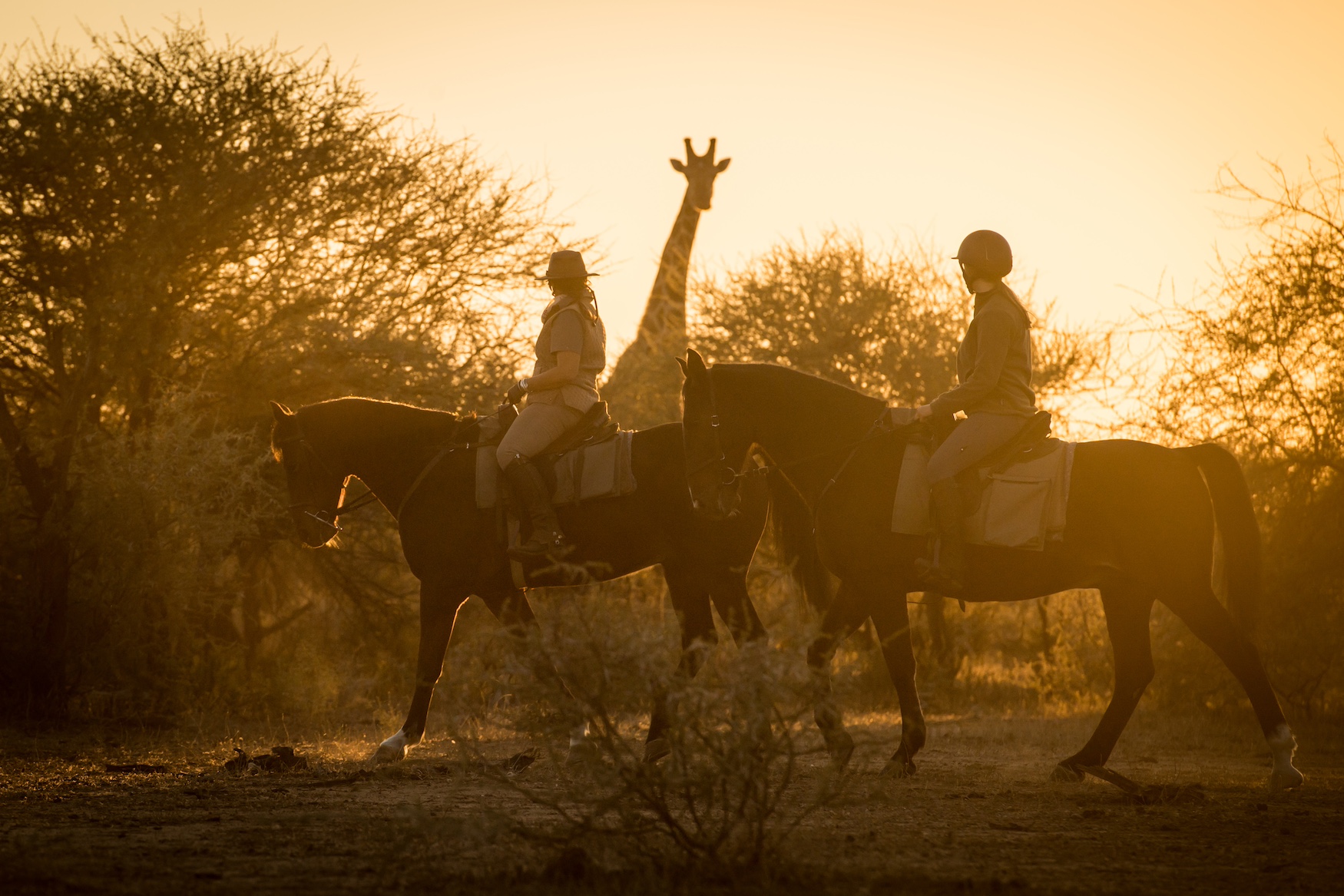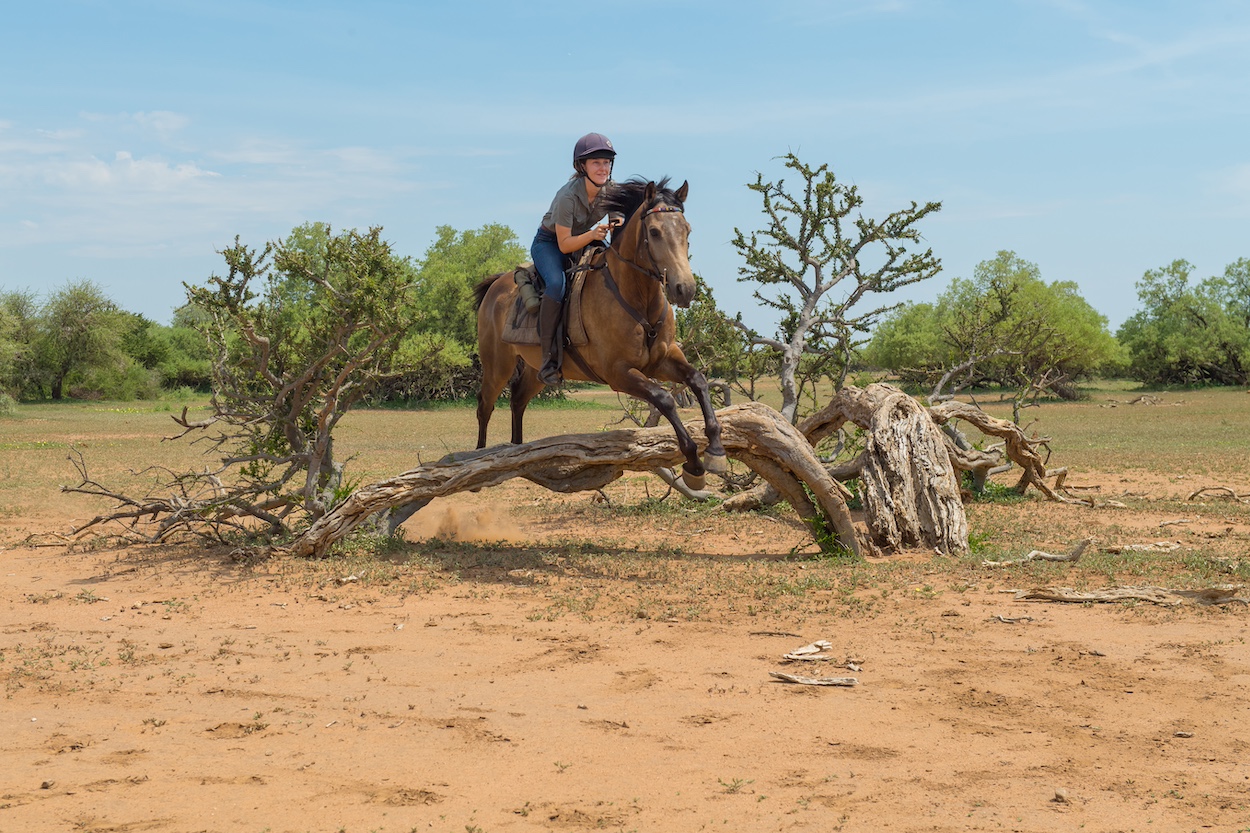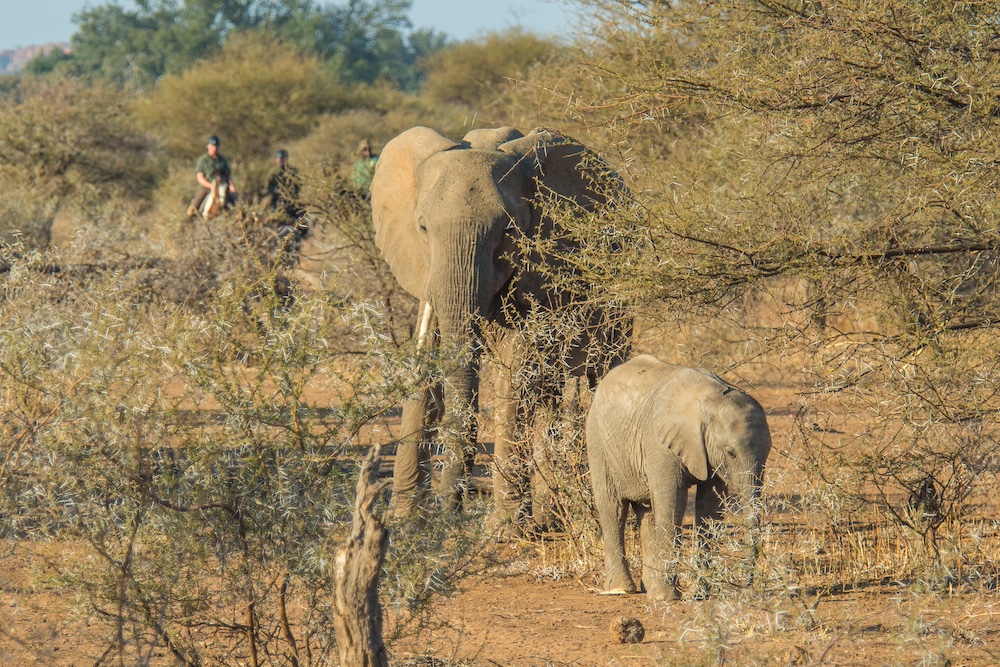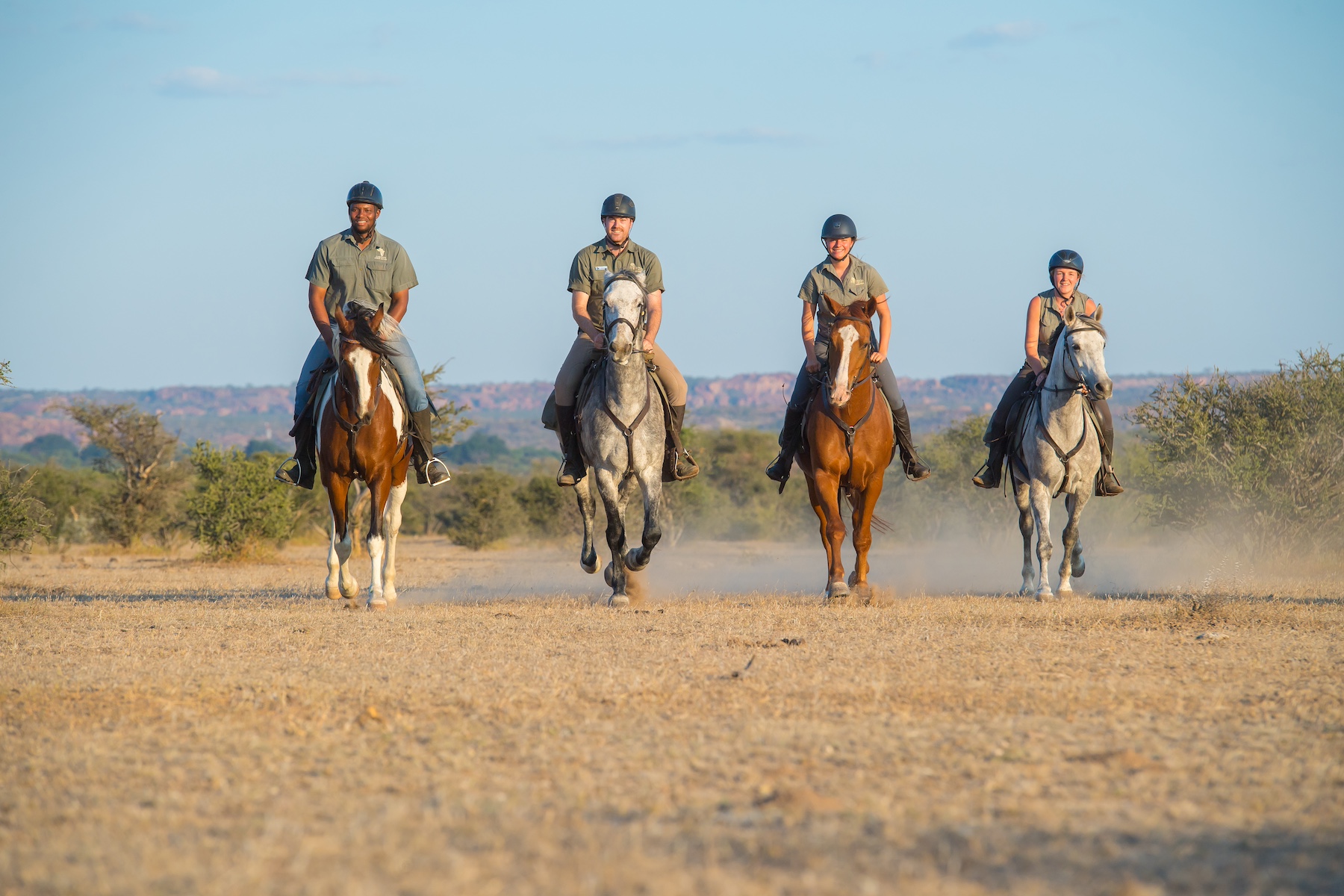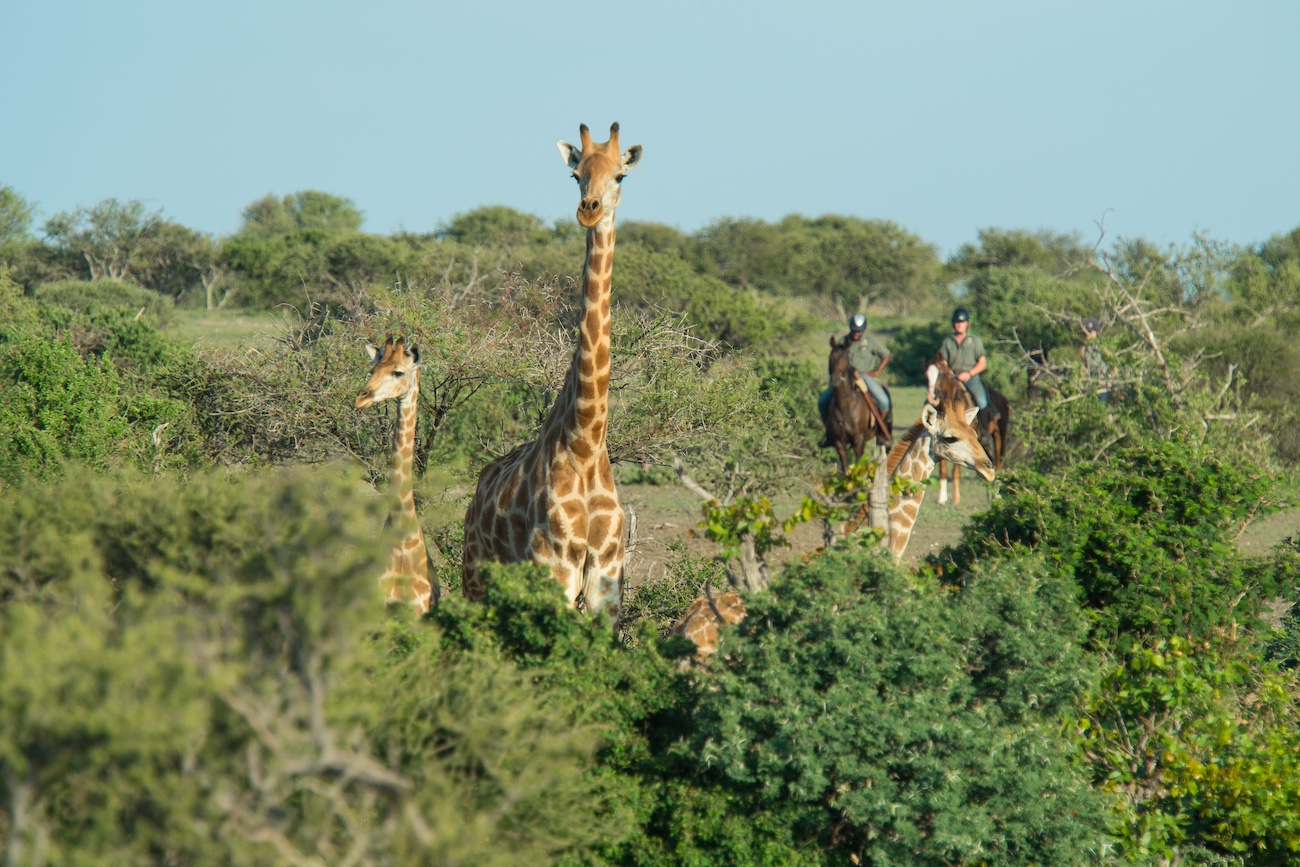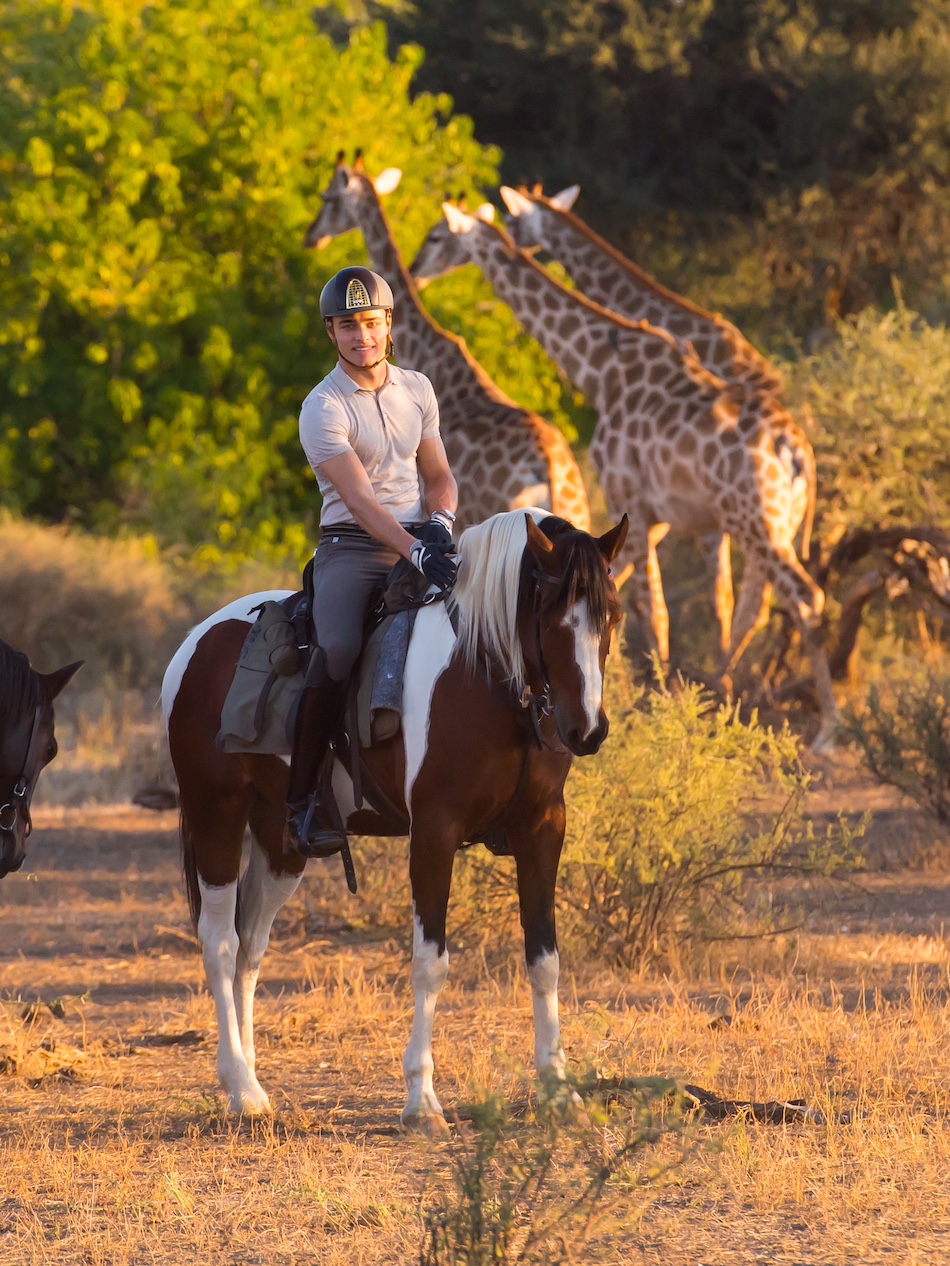Mashatu Reserve
Mashatu
Mashatu: the greatest exponent of wild reserves in Africa.
In an area of almost 20 km, we can watch elephants, extraordinary rivers such as the Libombo, millenary trees such as baobabs, felines such as leopards and cheetahs, spaces like the kgotla -where ancient tribes used to gather to rule. The line that connects all the dots is drawn by the path of the riders and their horses, who for being intrepid, let themselves get surrounded by the power of the savannah.
- Location
- South Africa
- Duration
- 8 Days / 7 Nights
- Season
- January - December
- Horses
- Warmbloods, Boerpherds and cross breeds
- The Riding
- 4 – 7 hours per day
Day by Day
Day 1. First contact.
When we land, we head to the stables with our guides. We make our first contact with the horses, who are waiting for us to start the adventure and will accompany us during the rest of the week. We make a test ride to strengthen the bond between the horse and the rider, and we start our journey. We ride our horses to the first camp, in Two Mashatus, and have lunch in the living room set under a palm tree. We prepare our minds and bodies for the experience to come in the next days.
Day 2. The heart of the Mashatu.
An infusion is brought to our tent and we then have a light breakfast. The next stop to spend the night in is the Majele camp, a series of rustic cottages at the top of the steeped shores of the Majele river. To get to it, we get out of the dense woods by following the river until the rocky hills that mark the borders of the great valley. In the heart of Mashatu, the view is fascinating, given that the Tuli zone hosts one of the greatest herds of elephants. After lunch, we have a guided tour to the observation posts called Majele Koppie. In the observation point, we contemplate the sight, the nature, the fauna, in order to understand that Africa deploys itself along time and space in a unique way.
Day 3. A travel in time: everything undergoes transformation.
Journeys are movement, transformation. Aren’t these the same characteristics that nature possess? Our cavalcades are movements along the space that also changes, it transforms, it interacts with animals and plants. We go from Matashu to the Libombo valley, where we find baobab trees. Maybe the fact that everything changes is what makes baobab trees so appealing: they have been there for thousand of years, witnessing all that changes around, and we are part of that change. We then meet the kgotla, an ancient space where old tribes debated community affairs. We can ride our horses to the amphitheatre formed by rocks, or make another guided tour.
Day 4. The same nature, it is the eyes of the beholder that change.
Mapungubwe’s topography is timeless. The oldest tribes of South Africa were settled in its valleys. Kings, for safety matters, settled at top of the hills. With our horses we will be able to see the same wildlife old settlers used to interact with. Are these the same animals? Which is the difference between the antelope of 6 thousand years ago and today’s antelope. Their way to move around and look for food? The nature is the same, it is the eyes of the beholder that change, our eyes. Another option is to ride our horses until the Lentswe Le Moriti villa and meet the natives, a group known for their knitting and baskets. At the end of the day, we take a few drinks at the top of the hill and contemplate from atop all the surroundings. This will be a memory you will not be able to forget.
Day 5. Searching for big felines.
After taking a heavy breakfast, we prepare ourselves for the most intense of our cavalcade days. We pierce the density of the Mopane, we head towards the close plains to the Limpopo river, and we may encounter elephants on the way. The Liana camp is settled between Mashatu huge trees and the Liana lake. In the afternoon, for those who dare, we go out of the reserve into the deep, in search of the big felines of the area: leopards, cheetahs and lions.
Day 6. Two Mashatus and the triumphal return of the traveller.
Today’s journey wriggles through the beautiful plains between the Mojali and Majele rivers. There is a lot of fauna and a magnificent view to the Limpopo river. We return to our camp base, Two Mashatus, with the feeling of a traveller that returns transformed, exhausted but captivated, with the need to have a time to let all the experiences sink in. When we arrive, we relax next to the pool and enjoy the comfort of our permanent camp with its shaded tents and private bathrooms. On that afternoon, we head to one of the near hills to have something to drink and contemplate the sunset.
Day 7. Live water source and game viewing.
We ride our horses for the whole day through the valley of the Pitsane river. A natural spring runs in the zone, which attracts animals that want to drink water and makes this place a splendid place to practice what the safari jargon denominates as “game viewing”, that is to say, the majestic fauna in full swing. We return to the camp and take advantage of the last night in the open air, under the night drafts and the stars that, far from the city lights, shine more than ever.
Day 8. Last sense of freedom.
It is sad that the last day is the moment you use to do all the things you did not do during the trip. Last chance to take photographs of the elephants, last chance to go around the mustard plants with our guide, last chance to feel the warm wind in our faces while we ride our horses in the open mount. We return to the stables, with enough time to have a hot shower and share a last meal. Then it’s time to go back home.

